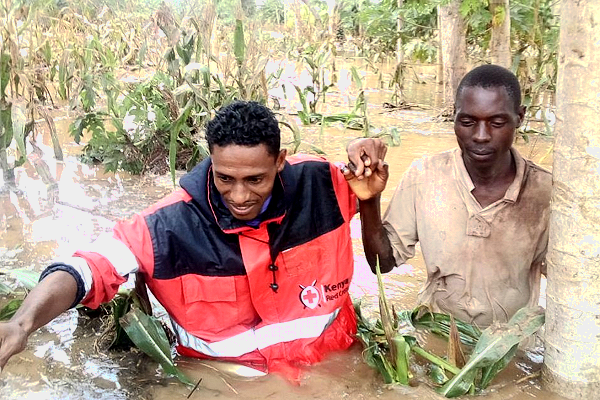
New papers highlight potential of social protection in managing climate risk

The IFRC together with the United Nations children’s agency Unicef and the UK Department for International Development last month jointly hosted its first workshop on links between humanitarian cash-transfers and social protection.
It sought to build a common understanding among specialists of what the connections are and practical ways to facilitate them.
“This was an important opportunity to bring together people working in various sectors to make a difference to how we operate in the humanitarian and development space in years to come,” said Caroline Holt, Manager, IFRC Global Cash Transfer Programming.
Recent academic work, meanwhile, including an analysis of the 2018 flood disaster in Kenya (photo), has flagged the different ways in which social protection can support climate resilience along varying timelines.
‘Shocks and stresses’
A paper in the April issue of the online Disasters journal draws on desk‐based and empirical studies in Ethiopia, Kenya and Uganda, finding that social-protection programmes that transfer cash make a “strong contribution to the capacity of individuals and households to absorb the negative impacts of climate‐related shocks and stresses…through the provision of reliable, national social safety net system.”
Building resilience to climate risks through social protection: from individualised models to systemic transformation adds that social protection can “increase the anticipatory capacity of national disaster-response systems through scalability mechanisms, or pre‐emptively through linkages to early action and early warning mechanisms, such as forecast-based action.”
Critical knowledge gaps remain on programme contributions to the adaptive capacity for long‐term resilience, it says, but the paper stresses the importance of “robust, national administrative systems as a key foundation”.
One case study in another April paper, from the UK-based Overseas Development Institute, which argues that forecast-based early action is an emerging “approach that can reduce the impact of shocks on vulnerable people”, examines the flood disaster in Kenya last year and finds “promising entry points for linking flood forecasts with social protection”.
Scoping and design for taking forecast-based early action to scale: three case studies says anticipatory cash transfers through national social protection could help “reduce the impact of longer-term displacement as a result of flooding, supporting timely evacuations and helping protect livestock or other movable assets.”
It adds that social protection more generally could enhance the management of flood risk, which could be expected to improve with the registration of beneficiaries.
‘This was an opportunity to bring
together people from various sectors
to make a difference to how we operate
in the humanitarian and development space’
Thirdly, a March policy brief from the InsuResilience partnership concludes that social protection and insurance against climate risk are “complementary instruments that respond to different types of shocks,” protecting against regular events as well as more infrequent, if not completely exceptional, shocks.
“On a national level,” it argues, “there is a strong case for integrating social protection instruments into an overall disaster risk financing strategy as part of a layered approach.”
A Kenya Red Cross volunteer rescues a resident in March last year after early and intense long-rains nationwide caused a major flood disaster that displaced more than 200,000 people. It’s one of the case studies in a new paper looking at the role of social protection in helping to manage climate risk. (Photo: KRCS)